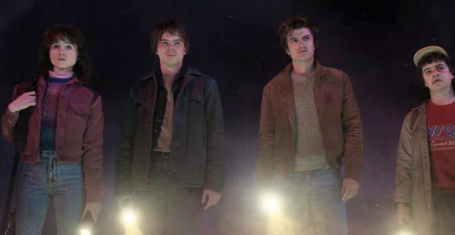
From pew to procession at Kings College Cambridge
My accidental journey into the chaplaincy team at King’s College Chapel
When you imagine life at Cambridge, you might conjure up gothic arches, libraries that smell like dusty old money, and people who say things like “matriculation” without irony. What you might not expect is to find yourself, six months in, dressed in a flowing white robe, tying a rope around your waist (badly), and solemnly carrying a candle the size of a small child up the aisle of King’s College Chapel.
And yet—here we are.
This all started, as the best things often do, with no intention whatsoever. I had simply started attending evensong. A lot of evensong. Perhaps a concerning amount of evensong. As every Cambridge student knows, the work schedule is full on, what with friends, lectures and essays, I was feeling the strain of Michaelmas. Something is soothing about slipping into the chapel for just under an hour of “getting away from it all”.
I adored the stained glass windows—honestly, I still stare at them like a tourist in my own college’s chapel. Growing up, I came from a Congregational church, thank you very much. Our windows were more “single-glazed minimalism meets condensation” than “sunlight through 15th-century saints.” If you’d said “Eucharist” to me before Cambridge, I’d probably have assumed it was either a medieval ailment or a discontinued brand of herbal cough drops. We didn’t do incense. We didn’t do vestments. I thought “chasuble” was maybe a kind of root vegetable.
Most Read
Our communion was squash and a plate of white bread that someone’s mum had kindly sliced that morning—none of this body-and-blood-of-Christ-in-a-silver-ciborium business. So when I first arrived at King’s, I felt a bit like I’d accidentally wandered into a particularly reverent West End production. I kept waiting for someone to tap me on the shoulder and say, “Sorry, you’ve walked into the wrong religion. The nonconformists are two streets over.”
But there I was, a Congregational stray with an ear for choral music, loitering on the periphery of high Anglican tradition. And lo, the reverand Mary Kells clocked me in the pews time and time again, deciding, quite logically, that I ought to serve. This is the thing about the Church of England: If you sit still long enough, it seems someone will put you in a robe and hand you something ceremonial to carry.
 Image credits- Evie du Bois
Image credits- Evie du Bois
First: A lesson in projection (and humility)
My initiation was mercifully gentle: I began with readings. How hard could it be? I was a decent public speaker, I reasoned. Like most people at Cambridge, I’d been Head Girl, I’d had my speech making experience. My trust in my abilities was misplaced and I’ve personally concluded that nothing can prepare you for the acoustic cruelty of King’s College Chapel. You open your mouth and the sound flies forty feet into the air and then rains down on you two seconds later – like God Himself is fact checking your pronunciation of “Corinthians.”
You stand at the reading lectern, you try not to look down. You try not to sneeze. You try not to think about the fact that you are reading Scripture to a small sea of international tourists, one of whom has just taken a photo with the flash on.
And yet, I kept doing it.
 Image credits- Evie du Bois
Image credits- Evie du Bois
Second: Enter the Acolyte
Next came acolyting. This is where things started to get very high church indeed. You wear a white alb, which is basically a long robe that makes you feel like a slightly under qualified angel, and you have to tie a rope around your waist in a very particular way that I still haven’t mastered. My knots look less “reverent symbolism” and more “escaped from school play.”
There are two acolytes in the procession, one on each side of the crucifer—the very serious person with the very serious cross. Together, we make up what I can only describe as a sort of holy tripod. Your job is simple in theory: Hold long, slightly precarious candlesticks, don’t set anyone on fire, and process in a slow, dignified line. Try not to swing your candle. Try not to hit the crucifer in the back of the head. Try not to get distracted by how shiny the thurible is in special services as it swings past like a very religious conker.
And here’s the brilliant twist: Although we walk at the very front of the procession, we are—liturgically speaking—at the bottom of the hierarchy. Behind us come the subdeacons and deacons, whose vestments are fancier, whose responsibilities are weightier, and who almost certainly have their rope belts tied properly. Yet the holy tripod go in front because of the great biblical reversal: “The first shall be last, and the last shall be first.” In practical terms, this means: “You’re here to look decorative, walk slowly, and make sure no one important trips over your hem.”
I’ll admit, the fear of accidental arson never entirely goes away. There’s always a small voice in the back of my head whispering, “what if your sleeve touches the candle and you go up like a birthday cake?” (So far, I remain unsinged.)
Acolyting has taught me many things: Posture, patience, peripheral vision. But mostly, it’s taught me that serving in chapel isn’t about being perfect—it’s about showing up, tying your ridiculous rope as best you can, and walking with purpose even when you’re 80 per cent sure you’ve put your alb on backwards.


Image credits- Evie du Bois
Third: Subdeacon shenanigans
After enough Sundays lighting candles and walking in suspiciously slow straight lines, I was entrusted with the role of subdeacon. A promotion! Of sorts. This means you stand behind the altar and hold one of the chalices during the Eucharist.
Now, this is a bigger deal than it sounds. Before this, I’d only ever been trusted with the gluten-free wafers, which was honestly kind of a niche role—like the dietary-restrictions wing of the Eucharist team. I had a fun, discreet bowl. I had a small, manageable congregation of people with coeliac disease and a deep trust in my gluten vigilance.
So, moving on to wine? Terrifying. First of all, there’s the chalice itself, you have to offer it with poise, eye contact, liturgical sincerity—and then wipe it. Yes, you have a little cloth to wipe the rim between communicants. The whole thing feels like a very holy cocktail ritual. You say the words. “The blood of Christ.” Over and over. Each time you look someone in the eye. Some cross themselves before and after. Some are uncertain and shy. Some are clearly tourists who wandered in thinking it was a Harry Potter tour and are now holding wine with an expression of deep theological confusion.
Still. You say it. You mean it. And somewhere between the first and last repetition, you realise it’s not performance. For those few seconds, you’re part of a sacred exchange that transcends the absurdity of the robe, the anxiety of the procedure, the awkward fact that you definitely wiped the wrong side of the chalice.
Then there’s the spill anxiety. No one talks about the spill anxiety. You’re holding a goblet of consecrated wine in front of a congregation full of fellows, choir members, and the odd bishop, and all you can think is: “If I drop this, I will have to change my name and flee to a small rural parish in Wales.”
The thought of sloshing the blood of Christ onto someone’s Barbour jacket is enough to make your hands tremble—which, unhelpfully, makes spillage more likely. It’s a vicious circle. There is nothing quite like the mix of religious reverence and rising panic when someone taller than you steps forward, and you have to stretch just a little too far to reach their lips with the chalice, all while maintaining composure and praying (in a very literal sense) that gravity behaves.

Image credits- Evie du Bois
Lastly: Ash Wednesday
The lunchtime Ash Wednesday Eucharist was meant to be quiet and simple—and it was, but in that intense, BBC period drama kind of way, where people speak softly and everything feels steeped in meaning. I honestly thought I’d breeze through it. I’d thought about the line. I thought about thumb placement. I’d made multiple jokes beforehand—told my friends, quite confidently, “Come to the chapel, free facials!” (They did not come.)
I thought I’d be in Technician Mode: Say the line, get the ash-to-forehead ratio right, and avoid drawing anything that looked like a rude gesture. But the moment Mary was unexpectedly in front of me—eyes closed, head bowed— I felt the ground shift slightly beneath me.
“Remember that you are dust, and to dust you shall return.”
I knew that sentence. I’d said it out loud into the bathroom mirror, like I was rehearsing for some ecclesiastical TED Talk. And still—when I said it for real, when I touched ash to someone’s forehead and looked them in the eye—I completely choked up. It turns out, reminding someone “You are going to die” while drawing on their face is not an emotionally neutral experience.
I left the chapel feeling genuinely undone, ash still under my fingernails, eyes slightly misty. I tried to play it cool afterwards—went to have lunch like nothing had happened—a huge dusty thumbprint still on my own forehead like a bizarrely pious stamp of participation.
It was the most moving thing I’ve done at chapel. Probably the most moving thing I’ve done at Cambridge full stop. The bar was previously set by crying at a particularly moving footnote in Middlemarch at 3am in the library, so make of that what you will.

Image credits- Evie du Bois
Get involved:
This next term will bring a new chaplain to King’s, replacing the marvellous Mary Kells (who, let it be known, is one of the loveliest people to ever gently encourage someone into religious service). But getting involved remains incredibly simple. If you’re a King’s student, just ask someone in the chapel. Seriously. You don’t need credentials. You don’t need experience.
Cambridge-wide, I think chapel life is one of the best-kept secrets of student wellbeing. It’s not about belief, necessarily. It’s about rhythm, about silence, about finding a place that asks nothing from you but presence. For all the noise of Cambridge life—supervisions, essays, panicked Pret queues—chapel offers a strange and wonderful alternative. You don’t have to be high church, or low church, or no church at all. You just have to show up.
I’ve also met the most amazing people— students from other colleges, choral scholars, the chaplaincy team, and random tourists who’ve mistaken me for a tour guide. It’s a side of Cambridge I didn’t expect to love. But I do.
So if you find yourself loitering in the pews one evensong (after reading my ‘evensong ranked’ series hopefully!) looking up at the windows you didn’t grow up with, wondering if there’s a place for you here—I promise you, there is. Someone might even hand you a candle.
Just be careful with the rope.
























